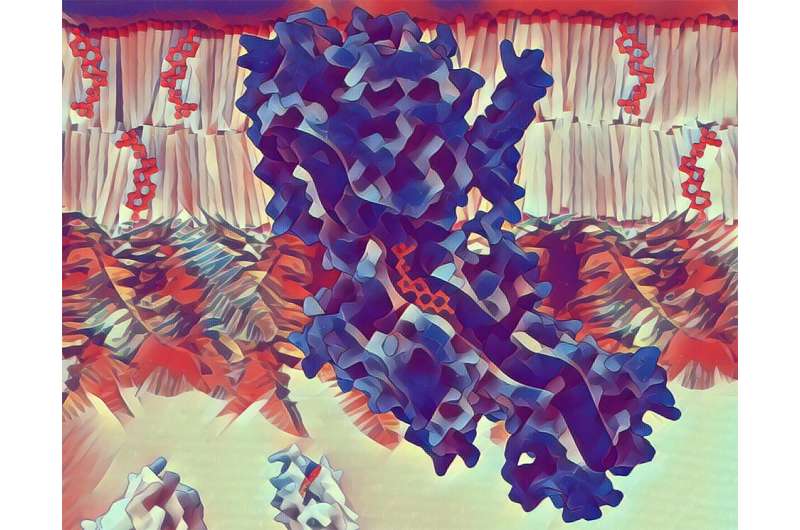This article has been reviewed according to Science X's editorial process and policies. Editors have highlighted the following attributes while ensuring the content's credibility:
fact-checked
peer-reviewed publication
trusted source
proofread
New insights into cholesterol dynamics shed light on neurodegenerative disease

Usually, the word "cholesterol" prompts a negative reaction because of its role in cardiovascular disease. While this is true, cholesterol is also vital for cells to function correctly—for example, cholesterol is a component of cell boundaries, the building block for vitamin D and hormones such as estrogen and testosterone.
To have these positive effects, cholesterol needs to be accessible and distributed throughout the cell. If cholesterol becomes trapped in a compartment within the cell, a disease called Niemann-Pick type C develops. This is a neurodegenerative disease that is also described as "childhood Alzheimer's."
The reason why cholesterol accumulates within these compartments is due to defective proteins within the compartment itself. To understand the fundamental aspects of cholesterol distribution, the research group studied one of the proteins that have been linked to this disease. Since they and others have speculated that the protein is sensitive to changes in pH, they used cryo-electron microscopy to visualize the structure of the protein at high and low pH.
The structures reveal a tunnel that passes through the protein, with a sterol molecule located inside. The diameter of the tunnel and the sterol's position therein differ between the structures obtained at high and low pH. It turns out that variations in the tunnel's dimensions and, therefore, the location of the sterol, are linked to a region of the protein that is responsive to changes in pH.
The researchers' findings contribute to the growing knowledge of Niemann-Pick type C disease and, generally, how cells distribute cholesterol, and maintain optimal levels of cholesterol. The findings are published in the journal Proceedings of the National Academy of Sciences.
First-author of the article Kelly May Frain said, "The complex and beautiful mechanism took a lot of patience and people to piece together. Our collaborative approach benefited the story, we each had skills which we shared and brought to the table. I'm really proud of this work, its insights are novel and on a personal level it was so cool to work on."
"We are very pleased with these results, which have been in the making for the past five years. I am so grateful for this learning experience and a fantastic team to share it with," adds co-first author Lynette Nel.
More information: Kelly M. Frain et al, Conformational changes in the Niemann–Pick type C1 protein NCR1 drive sterol translocation, Proceedings of the National Academy of Sciences (2024). DOI: 10.1073/pnas.2315575121
















